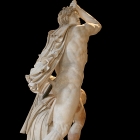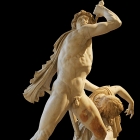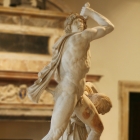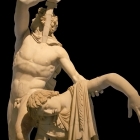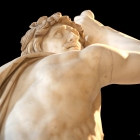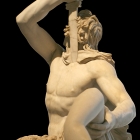A masterpiece of Hellenistic art: The suicide of a Galatian
In antiquity, Galatia was populated by migrant Celtic tribes from Gaul and was situated in Anatolia, where today is Turkey. Long before the Ottomans or even the Romans to arrive, the region was under the cultural influence of the Greek world. Alexander the Great conquered the entire known world as far as the knowledge of ancient scholars stretched, but his descendants could not raise to the level of such a figure. One of the four main regions in which the Macedonian empire was divided was Pergamon, which included what is today the northern part of Greece and Turkey. For over two centuries after the death of Alexander Macedon, the Greek heritage thus survived in Galatia as in Persia, Egypt, Italy or parts of Middle East.
Old Oriental traditions were combined with Greek art in the melting pot of Hellenistic world. While the glory of former Athenian democracy or that of Alexander’s empire were subjects of nostalgia, the Hellenistic kingdoms, ruled by satraps, produced examples of fine art and remained influential cultural centers. The library of Alexandria was the greatest in the world and the most illustrious Roman leaders came here or to Rhodes for their advanced education.
The dramatic statue of a Gaul killing himself with a dagger while holding her dead wife is an example of excellent art in the Hellenistic era. Even from this Roman later replica we can still see the perfect proportions of composition, the precision with which anatomic details are rendered and the reproduction of movement. The statuary group was part of the collection of the papal Ludovisi family. As this noble family went bankrupt, the Italian state bought most of its artistic treasures and spread their real estate. The Suicide of a Gaul (or Galata suicida) can be admired in a room of Palazzo Altems which is now an art museum in Rome.
Mai multe despre: Italia • art • Galata suicida • Galatia • Galatian Suicide • Ludovisi • marble • Museum • Palazzo Altemps • sculpture • Sculptures • suicide- Home Page
start page - Architecture
landmark buildings - Sacred architecture
places of worship - Nature
landscape photography - Concert
performing artists - Christmas
Santa Claus pictures
- Jooble
jobs for photographers - Escape
an out of control blog - Merry Christmas
The best organizer of Christmas parties - Astro photo
Eclipse hunting and astrological photography

